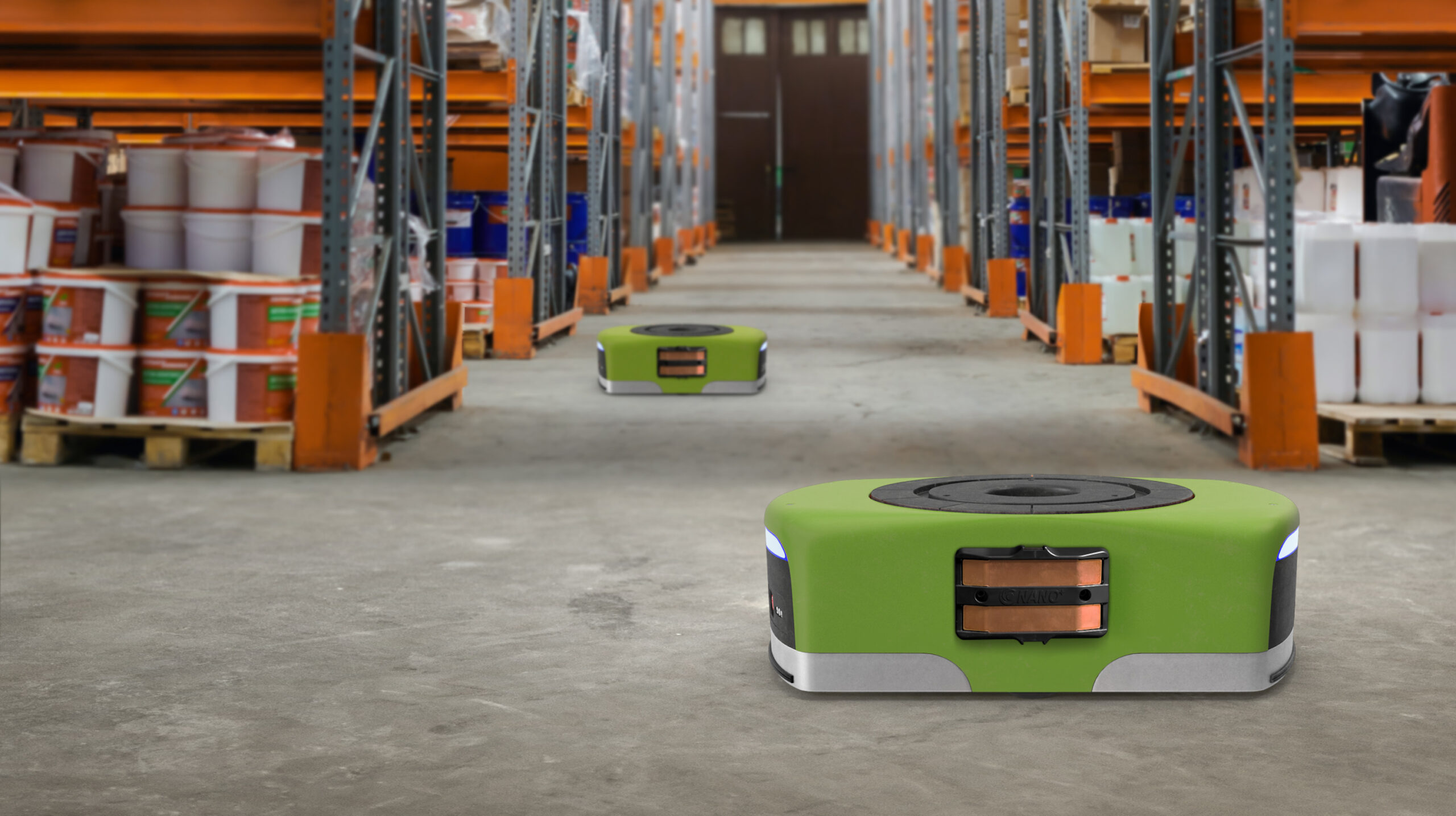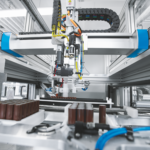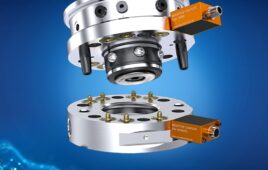Most businesses with warehousing functions can realize greater efficiency, safety, and productivity from autonomous mobile robotics. For those ready to make the leap but unsure where to start, following are key industry trends and considerations.
By Kelly Schroder | Business Development Specialist — Americas • Conductix-Wampfler
The autonomous mobile robot (AMR) market saw a massive surge in 2022. This demand was driven by the industry’s need for automated solutions, efficiency, and safety. Propelled by the ongoing impacts of the pandemic, rise in e-commerce and ongoing labor shortages, businesses invested more in AMRs to help alleviate business pressures and remain productive. Company orders for these robots increased by 40% in the first quarter of 2022 YoY.
That growth is just the beginning, as the market is expected to reach $10.6B by 2030. So now, many companies are considering how AMR technology can support their operations.
Those looking to invest in AMRs must analyze business operations and identify where robotics-based automation can yield the most significant ROI. By understanding last year’s developments and upcoming trends (as well as the current market and best practices in the AMR space) businesses can make informed decisions about AMR adoption for specific operations.

The Conductix-Wampfler Nano+ is an AMR charging solution with industry-leading features — including a modular and compact design utilizing a single base plate as well as three distinct predetermined amperage settings for brushes … 25 A, 50 A, and 75 A.
Last year: Faster ROI for mobile-robot investments
In 2022, robotics tended to yield full ROI more quickly due to the increasing labor shortage. The pandemic emphasized pre-existing operational issues including uneven balance between the number of qualified workers and the skyrocketing demand within the commerce market.

AMRs are quickly becoming indispensable to supply-chain and warehousing strategies. Many companies that have managed fulfillment without AMRs will be investing in the technology in the years to come … especially as e-commerce rapidly grows.
While some businesses benefitted from COVID-19 with increased sales, others struggled to satisfy the e-commerce demand. Now, nearly three years later, the connections between mobile robots, automation, e-commerce are even clearer. It’s quite apparent companies must consider automation to serve end users and achieve growth.
Businesses can start by considering robotic applications as a form of automation and then assessing which will best fit their specific needs. Larger AMRs can lift and move pallets of product; smaller versions lift and move cartons or totes. All can be configured to carry multiple items and navigate facilities by sensing stationary and moving obstacles.
The past year saw an uptick in leased robots — especially AMRs employed to get operations through their busiest months.
AMRs are expected to be the driving force for growth and efficiency in manufacturing businesses and beyond. Although traditionally seen in warehouse spaces and in automating assembly lines, AMRs have expanded their horizons and made their way into hospital settings, the e-commerce market and more. By removing these tedious steps usually completed by people, time and resources are saved, and efficient outcomes are produced.
What to expect for robotics this year
The robotics industry is expected to grow as more businesses look unburden overloaded plant personnel of dangerous and mundane work. Ideally, that boosts productivity while minimizing personnel stress and physical injuries. Here, AMRs can often automate tasks primed for profitability increases. Despite misconceptions that robots rob potential employees of job opportunities, they’re addressing labor shortages while in nearly all cases collaborating with human counterparts.
This year, industry experts also expect to see an uptick in company acquisitions. Much of this consolidation is due to the purchasing of startups that’ve created solutions with the intention of ultimately being acquired.

AMRs can help businesses grow and stay nimble, but they’re hardly a one-size-fits-all solution for supply-chain businesses.
Three key considerations when investing in AMRs
To maximize their ROI, businesses should evaluate the overall purpose an AMR serves and what it can deliver. Like most robots and devices, AMRs’ operational effectiveness and success comes down to charging. There are a few best practices to consider.
1. Set up intentional charging stations
When thinking about charging strategies in warehouses and facilities for AMRs, it is ideal to have charging stations set up along their set paths to continue movement and automation. For many businesses, however, charging strategies are either not considered or become an afterthought, consequently resulting in inefficient charging or downtime, which can lead to a longer return on investment.
Other considerations include safety and what kind of charging infrastructure works best for operations for specific facilities. Environments with more heavy-duty materials may benefit from AMRs, where the robot can take over the lifting tasks and further prevent injury or strain.
2. Choose the best charging option
The design and selection of AMR charging strategy and infrastructure is just as important as the AMRs themselves. The most efficient charging options use automatic arrangements employing conductive or inductive operation. Conductive charging requires contact with a conductor to transfer energy; in contrast, inductive charging (wireless charging) uses electromagnetic induction to transfer electricity without contact.
When automatic, both maximize operational uptime by allowing battery or capacitor charging anytime AMRs are stationary — at staging areas, workstations, loading and unloading stations, and turnarounds. Certainly these automatic options are more efficient than manual (and even automated) battery swaps or installations that rely on operators to plug the AMRs into charge stations.

Companies considering investing in AMRs should assess where they’d generate the most significant ROI. Next should follow a ranking of priorities and the design of facility charging infrastructure (as shown here). Engaging consultants and developmental strategists can help organizations ensure their charging and AMR are well suited to the installation at hand.
Using lithium or lead-acid batteries, inductive charging can be optimized by a constant interaction between the onboard battery management system and inductive power supply. In contrast to conventional charging methods — conductive charging contacts as well as “plugged” inductive systems — wireless inductive battery chargers don’t use any plugs or paddles and are fully intervention free. Providing in-progress charging automation capabilities, inductive wireless chargers are ideal for applying opportunity charging … meaning there are no extended dead times for charging or traveling times to designated charging locations.
3. Think through data-transfer needs
Despite the growing adoption of AMRs, a persistent challenge is that of data transfer. Historically, data-transfer strategies were an afterthought or not considered in the implementation of AMRs. Today’s designs demand a new approach. In 2023 and beyond, it will be critical for businesses to identify the best ways to increase data-transmission capabilities. That’s because only robust data transmission can enable maximally responsive AMR operation; seamless information flow to enterprise-level systems; optimizations of automated processes; and maximally effective maintenance and safety routines.
Current challenges of AMR data transfer include slow transmission speeds and limited bandwidths; security concerns; unreliable wireless connectivity and dead zones; systemwide impacts of one component’s outage, difficulties with adding signal conductors to facilitate data transfer, and cost and downtime associated with modernizing existing systems.
One solution is advanced transfer data while AMRs charge. During charging, there’s time to transfer information to an onboard or central server. Digital I/O, CANbus, and Ethernet interfaces support these functions. Or data over powerline (PliFi) connections can provide secure realtime communication without perceived limitations assumed of hardwired solutions.
Conductix-Wampfler USA | conductix.us
You may also like:
Filed Under: Robotics • robotic grippers • end effectors









